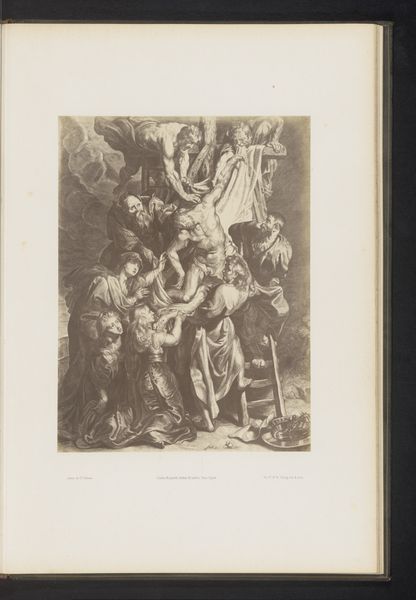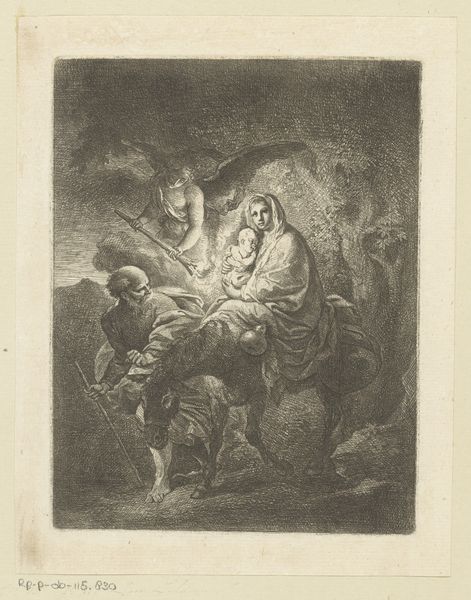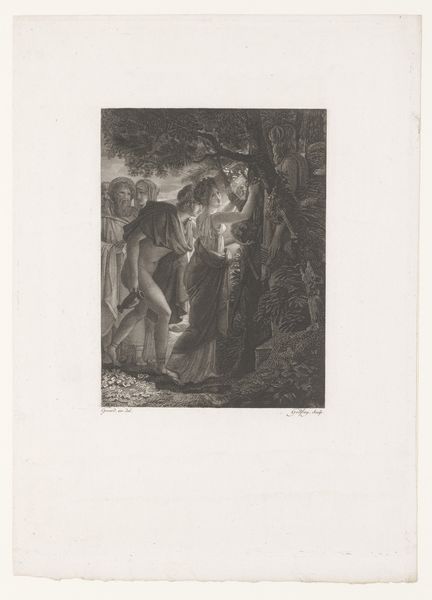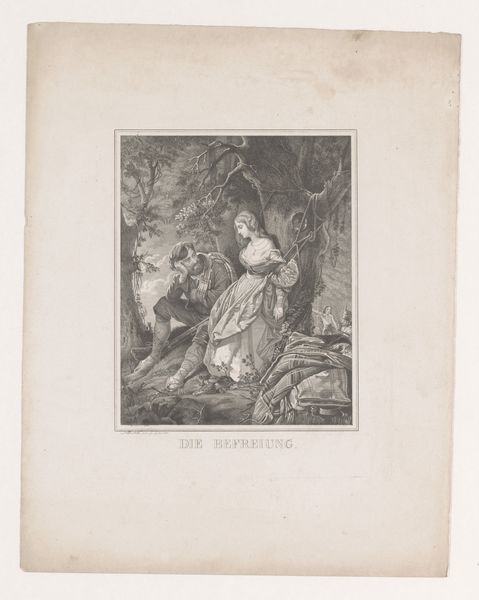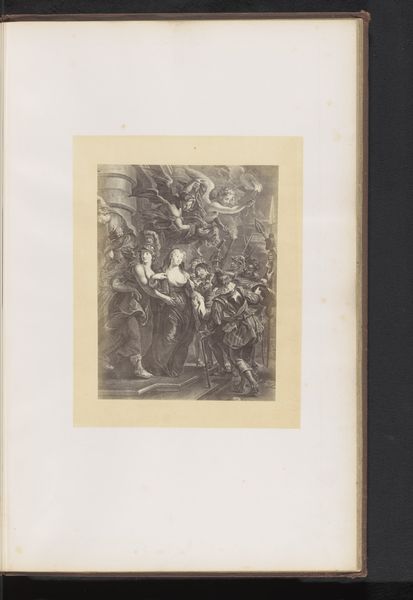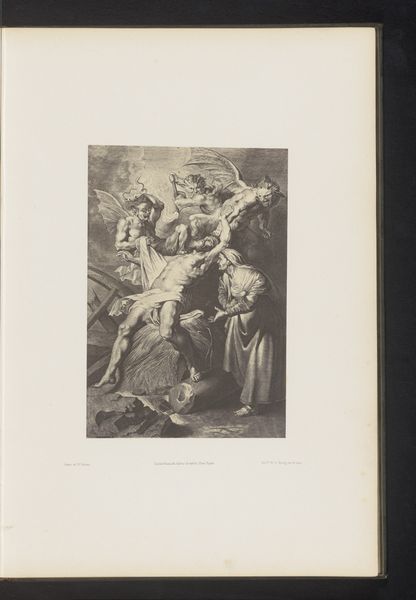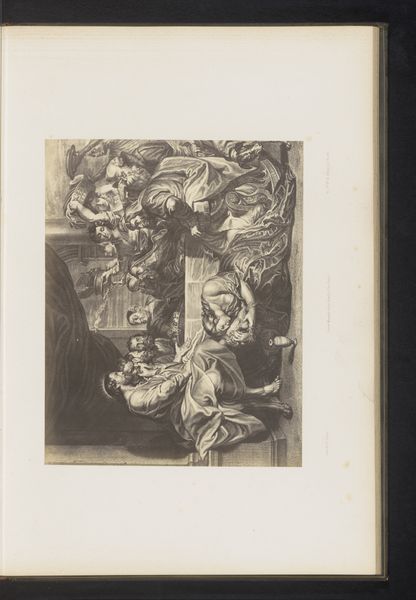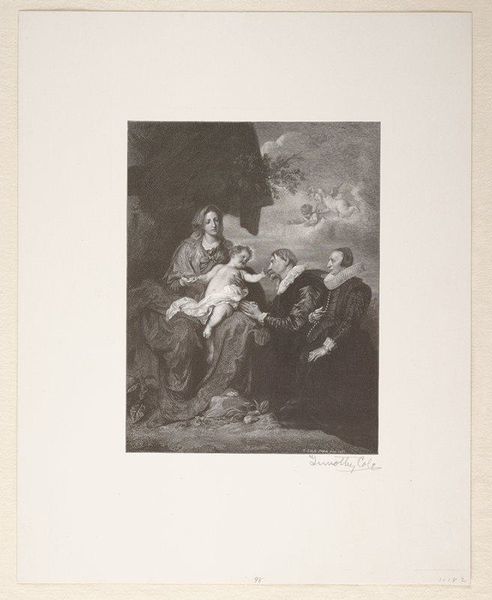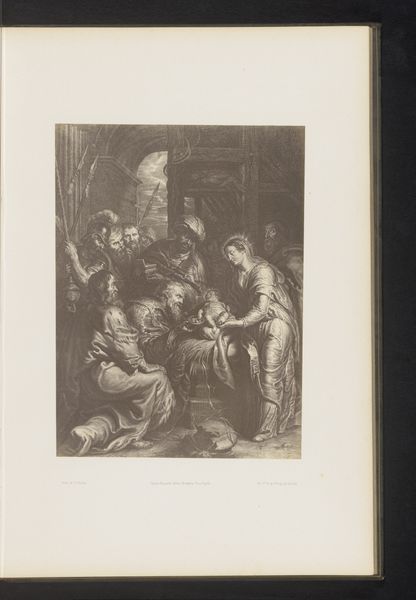
Fotoreproductie van een gravure van de Annunciatie door Schelte Adamsz. Bolswert, naar het schilderij door Peter Paul Rubens before 1858
0:00
0:00
Dimensions: height 303 mm, width 228 mm
Copyright: Rijks Museum: Open Domain
Curator: This artwork is a photographic reproduction of an engraving titled "The Annunciation," which Schelte Adamsz. Bolswert created after a painting by Peter Paul Rubens. The print dates from before 1858 and the photograph, of course, some time after that. Editor: My first impression is the heavy contrast! It feels both dramatic and a little unsettling; there’s this delicate balance between darkness and divine light. Curator: Yes, the interplay of light and shadow is quite pronounced, reflective of the Baroque style Bolswert was working in. The piece depicts the archangel Gabriel announcing to Mary that she will conceive and bear a son, Jesus. The focus is very much on Mary’s acceptance of this destiny, what this single moment means for intersectional gender constructs and theological history. Editor: Absolutely, and that moment is beautifully captured in her expression. I imagine the weight of the news...she's just kneeling there, book in front of her. Makes me wonder, what passage was she reading? Does it somehow foreshadow the announcement? It’s like she's both resigned and radiant, shrouded in an aura. It’s moving. Curator: Bolswert was a master of engraving, rendering the richness of Rubens' painting into the graphic language of black and white. Note how carefully he crafted the drapery, the angel's wings, and the cherubic faces in the heavens above, all teeming with emotional depth. It speaks to the socio-cultural understanding of faith during that era and gender roles, where Mary is being ascribed a powerful identity, though framed through a male savior figure. Editor: I'm drawn to those cherubic faces—a swirling mass of baby angels peering down! A bit chaotic and overwhelming when you consider the gravity of what’s happening below. Maybe a deliberate commentary on the all-consuming nature of faith and divinity. Curator: Possibly! We should also think of the audience this image was created for— likely individuals who would not have had access to the original Rubens painting. The print allowed for a wider dissemination of the image, spreading its religious and cultural message to different sectors of society. Editor: Looking at it again, I still see that initial starkness, the emotional weight of destiny. But there is peace here as well. Like accepting your role in the epic narrative, no matter how big, scary, or uncertain it may be. Curator: Indeed, its historical layers prompt consideration, even now, as our societal and theological constructs evolve in dialogue with legacies of faith and art history.
Comments
No comments
Be the first to comment and join the conversation on the ultimate creative platform.


